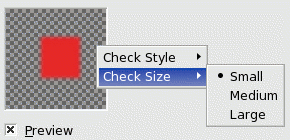| Chapter 16. Filters | ||
|---|---|---|
 |
Part III. Function Reference |  |
Table of Contents
A filter is a special kind of tool designed to take an input layer or image, apply a mathematical algorithm to it, and return the input layer or image in a modified format. GIMP uses filters to achieve a variety of effects and those effects are discussed here.
The filters are divided into several categories:
Blur see Section 2, “ Blur Filters ”.
Noise see Section 3, “ Noise Filters ”.
Edge-Detect see Section 4, “ Edge-Detect Filters ”.
Enhance see Section 5, “ Enhance Filters ”.
Generic see Section 6, “ Generic Filters ”.
Light and Shadow see Section 7, “ Light and Shadow Filters ”.
Distorts see Section 8, “ Distort Filters ”.
Artistic see Section 9, “ Artistic Filters ”.
Map see Section 10, “ Map Filters ”.
Render see Section 11, “ Rendering Filters ”.
Web see Section 14, “ Web Filters ”.
Animation see Section 13, “ Animation Filters ”.
Combine see Section 12, “ Combine Filters ”.
Most filters have a Preview where changes in the image are displayed, in real time (if the “Preview” option is checked), before being applied to the image.
Figure 16.1. Preview submenu

Right clicking on the Preview window opens a submenu which lets you set the Style and the Size of checks representing transparency.